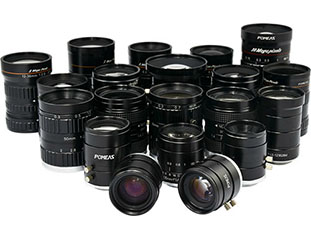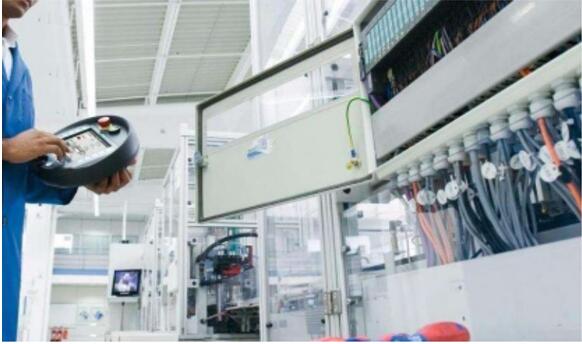What happens when you choose the wrong focal length for an industrial lens?
In the industrial vision system, the industrial lens as the core component, the focal length of the choice is like the cornerstone of the building, plays a pivotal role. Focal length not only determines the imaging characteristics of the lens, but also closely linked to the accuracy and efficiency of the entire industrial inspection or production process. Once the focal length is chosen wrongly, it will cause a series of serious problems, affecting all aspects of industrial production.


The fundamental role of focal length in imaging
Focal length, in simple terms, is the distance from the main point of the lens' optical rear to the focal point. From the imaging principle, the focal length directly determines the field of view and magnification of the lens. Shorter focal length of the lens, the field of view is larger, can capture a wider range of scenes, but the magnification of the image is relatively small, suitable for large area target rapid detection or monitoring, such as in large warehouses inventory of goods in the vision system, short focal length lens can quickly access the distribution of goods throughout the warehouse. The longer focal length lens, the field of view angle is smaller, but can provide higher magnification, suitable for tiny targets or details require very high detection tasks, such as semiconductor chips in the fine line detection, long focal length lens can clearly present the chip on the tiny circuit structure.
Impact of Focal Length Selection on Detection Accuracy
① Dimensional measurement accuracy
In industrial inspection, it is often necessary to accurately measure the dimensions of an object. The accurate selection of the focal length is one of the key factors to ensure the accuracy of dimensional measurement. If the focal length is not properly selected, it will lead to deviations in the proportionality between the actual size of the image and the size of the real object. For example, in the size inspection of precision mechanical parts, if the focal length is too long, the parts will appear too large in the image, beyond the effective range of the camera sensor, resulting in inaccurate measurement data; on the contrary, if the focal length is too short, the parts in the image is too small, some of the subtle dimensional features are difficult to distinguish, and the same can not get accurate measurement results.
② Defect detection capability
For defect detection of industrial products, the appropriateness of the focal length is directly related to the ability to accurately detect and recognize defects. When detecting tiny defects on the product surface, such as scratches and cracks on the shell of electronic products, sufficient magnification is required, which requires the selection of a longer focal length lens. If a short focal length lens is selected, defects may become blurred or difficult to detect in the image, leading to missed inspections and defective products flowing into the next process, affecting product quality and corporate reputation.
Impact of Focal Length Selection on Detection Range and Efficiency
① Restricted detection range
The focal length determines the size of the field of view, which in turn affects the detection range. If the focal length is chosen to be too long and the field of view is too small, a single imaging can only cover a very small area. In the detection of large objects or large areas of the scene, it is necessary to move the lens or camera frequently, increasing the detection time and complexity. For example, in the nondestructive testing of large bridge structures, if the use of long focal length lenses, each time only a small part of the bridge can be photographed, in order to complete the detection of the entire bridge, it is necessary to spend a lot of time and energy for multiple shooting and splicing, which greatly reduces the efficiency of detection.
② Reduced detection efficiency
An unsuitable focal length may also lead to a cumbersome inspection process, thus reducing inspection efficiency. When the focal length does not match the inspection task, the lens may need to be adjusted or replaced several times to meet the actual demand. This not only wastes time, but may also affect production continuity. In an automated production line, each lens adjustment may lead to a short pause in the production line, which cumulatively will have a greater impact on production efficiency.
Other problems caused by choosing the wrong focal length
① Mismatch with camera and light source
An industrial vision system is a whole composed of several components such as cameras, lenses and light sources. The choice of focal length needs to match the sensor size of the camera and the illumination method of the light source. If the focal length is chosen wrongly, it may lead to the imaging mismatch between the lens and the camera, resulting in problems such as dark corners and blurred edges of the image. At the same time, it may also affect the illumination effect of the light source, so that the light of the detected object is not uniform, further affecting the accuracy of the detection results. For example, if the camera sensor size is small and a lens with too long a focal length is selected, it will result in the image field of the lens not being able to completely cover the sensor, resulting in dark corners of the image.
② Increasing costs
Incorrect focal length selection may result in the need to re-purchase a suitable lens, which undoubtedly increases equipment purchase costs. In addition, a decrease in inspection accuracy and efficiency may lead to product quality issues and the need for more rework and testing, increasing production costs. In some projects with tight time requirements, project delays due to incorrect focal length selection may also result in additional financial losses.
The correct choice of focal length ensures high precision and efficiency in industrial inspection and guarantees smooth production. While choosing the wrong focal length may cause a series of problems, from the decline in detection accuracy, limited detection range, to mismatch with other system components, cost increase and so on. Therefore, in the process of industrial vision system construction, we must fully consider the specific needs of the inspection task, combined with the parameters of the camera and light source and other components, carefully select the appropriate focal length of the industrial lens, to provide a solid guarantee for industrial production and quality control.
Product recommendation
TECHNICAL SOLUTION
MORE+You may also be interested in the following information
FREE CONSULTING SERVICE
Let’s help you to find the right solution for your project!


 ASK POMEAS
ASK POMEAS  PRICE INQUIRY
PRICE INQUIRY  REQUEST DEMO/TEST
REQUEST DEMO/TEST  FREE TRIAL UNIT
FREE TRIAL UNIT  ACCURATE SELECTION
ACCURATE SELECTION  ADDRESS
ADDRESS Tel:+ 86-0769-2266 0867
Tel:+ 86-0769-2266 0867 Fax:+ 86-0769-2266 0867
Fax:+ 86-0769-2266 0867 E-mail:marketing@pomeas.com
E-mail:marketing@pomeas.com
